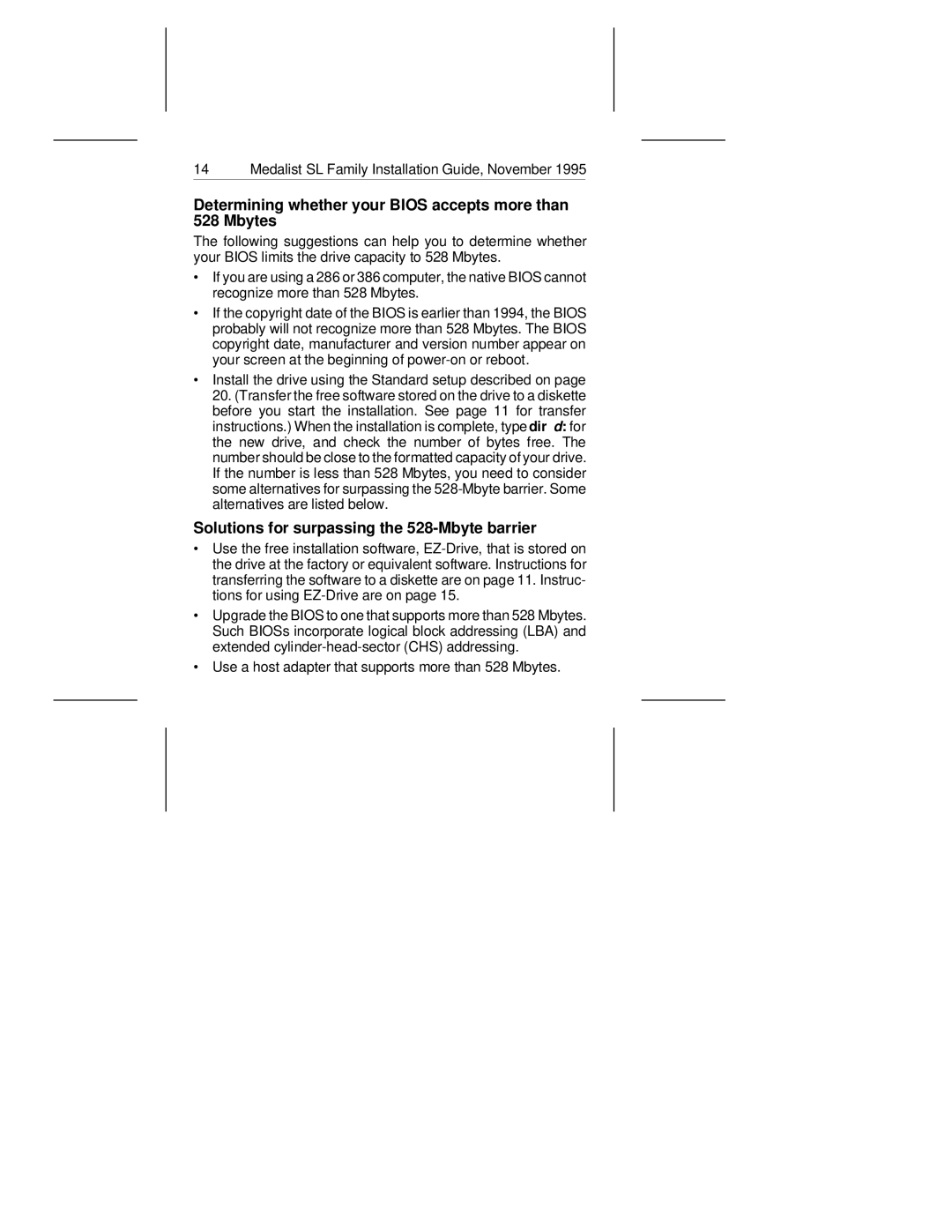
14 Medalist SL Family Installation Guide, November 1995
Determining whether your BIOS accepts more than 528 Mbytes
The following suggestions can help you to determine whether your BIOS limits the drive capacity to 528 Mbytes.
∙If you are using a 286 or 386 computer, the native BIOS cannot recognize more than 528 Mbytes.
∙If the copyright date of the BIOS is earlier than 1994, the BIOS probably will not recognize more than 528 Mbytes. The BIOS copyright date, manufacturer and version number appear on your screen at the beginning of
∙Install the drive using the Standard setup described on page 20. (Transfer the free software stored on the drive to a diskette before you start the installation. See page 11 for transfer instructions.) When the installation is complete, type dir d: for the new drive, and check the number of bytes free. The number should be close to the formatted capacity of your drive. If the number is less than 528 Mbytes, you need to consider some alternatives for surpassing the
Solutions for surpassing the 528-Mbyte barrier
∙Use the free installation software,
∙Upgrade the BIOS to one that supports more than 528 Mbytes. Such BIOSs incorporate logical block addressing (LBA) and extended
∙Use a host adapter that supports more than 528 Mbytes.
